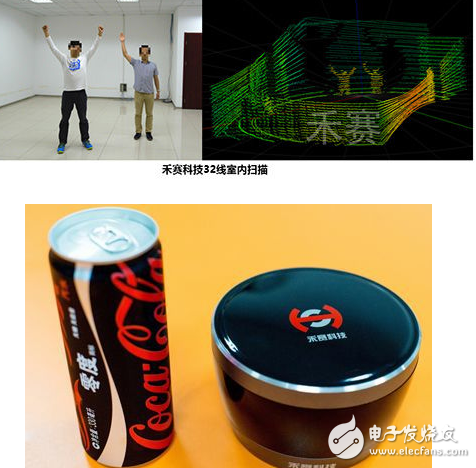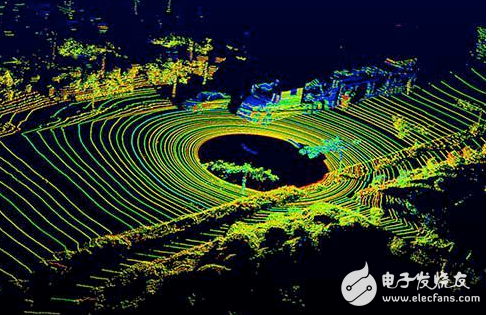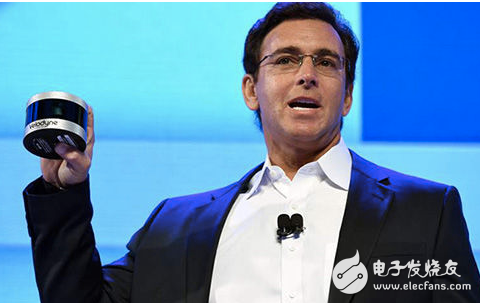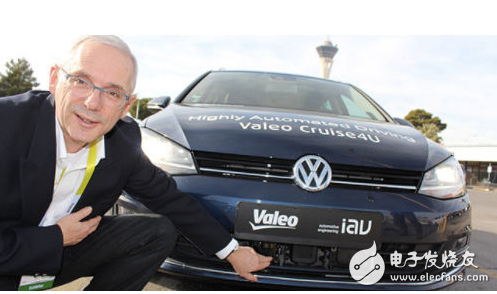At the upcoming China International Industry Fair, Hesai Science and Technology will release the 32-line laser radar (LiDAR) available for unmanned vehicles and assisted driving for the first time. Hesai said that the 32-line LiDAR can achieve a detection distance of 150 meters, using a mechanical rotation design, a horizontal field of view of 360 °, a vertical field of view of 30 °. The product has been tested internally, which is the first domestic multi-line laser radar manufacturer to publicly display the 32-line laser radar product and the actual measurement effect video. According to Li Yifan, founder of Hesai, the 32-line laser radar will be available in small quantities early next year, when the price will be "very competitive."

Looking through the news, we will find that domestic laser radar companies seem to have ushered in product explosions in the past six months. In May 2016, Kita Tianqi launched the first 16-line 360-degree navigation LiDAR, R-Fans. On October 28th, RoboSense also released RS-LiDAR, a 16-line laser radar. Under the background of the monopoly of the automotive laser radar market by foreign brands, the birth of autonomous multi-line laser radar products has brought more possibilities for lowering the price of products.
Why do you need a laser radar for driverless driving?After several security incidents in Tesla, Musk announced on Wednesday that all production models of Model S, Model X and Model 3 will be equipped to the highest level of driverlessness (Level 5). The sensor includes 8 cameras, 12 new ultrasonic sensors and a forward detection radar. Musk carried out the "camera + millimeter wave + ultrasonic" sensing solution to the end, and did not consider the laser radar from beginning to end.
The car laser radar was thus "disgusted" by Musk.
As we all know, full driverless has liberated human hands, feet and eyes. In the environment, it must meet 360 degrees of detection of the surrounding environment in any weather at any time. At this stage, one of the sensors alone cannot meet this requirement.
Musk's idea can be guessed one or two. "Camera + millimeter wave radar + ultrasonic radar" because of the low price, can be the fastest speed productization. Let more unmanned functions be used, and then provide the effective data needed to perfect the algorithm through crowdsourcing. This is Musk's idea, and the goal is to "explore the potential of software algorithms to overcome hardware bottlenecks and achieve full unmanned".
Another idea is to combine various "imperfect" sensors.
The camera is good at identifying (the object is the car or the person, the color of the sign), but it is easily affected by light and weather. When it is exposed to strong light, it will cause blindness. When the luck is the worst, the whole sensor will fail. Millimeter wave radar shows strong reliability in different light and weather. The main function is to detect and track objects, but the resolution is relatively low. Look at things like myopia without glasses and the ability to detect pedestrians. Laser beam The gathering characteristics do not miss small objects due to diffraction, but because the overall technology is not as mature as millimeter waves, the performance in rainy and foggy days will be affected.
This route believes that under the premise of “hardware is foolproofâ€, the algorithm can be simplified to achieve faster functions. No single sensor can be used on its own, and lidar is no exception. However, due to its precise and fast characteristics, it has become an indispensable supplement.
For unmanned driving who is still in the stage of arguing, the time will verify the feasibility of the technical route. However, it is undeniable that in a mainstream technical solution recognized by many people, the fact that lidar and unmanned driving are together is a nail. ABB, Volvo, Ford and other brands have plans to use lidar on production cars. They started development cooperation with laser radar suppliers as early as four or five years ago, and will launch mass production of laser radars within three years. car.
Market mainstream laser radar supplierAt present, most automotive laser radars are monopolized by two foreign companies.

Velodyne 64 line lidar point cloud map
One is Velodyne from Silicon Valley, USA. The main product is 3D laser radar. Because there are many longitudinal laser lines, there are 16, 32 and 64, the vertical viewing angle is larger, the data collection of the whole environment can be carried out, and the edge contour of the object in the field of view is clearly outlined. If the laser point cloud image is generated by software, it can be drawn in real time. All objects around. This multi-line laser radar often uses one or more schemes, placed in different positions on the roof or body, from small to large pedestrians, trees, houses, and the physical environment within the scanning range can be reconstructed in 3D.

Solid-State Hybrid Ultra PuckTM Auto
Our most common "roof flower pot" is the company's 64-line laser radar product, 32 lines can also be found in many unmanned car cases. In order to better adapt to the automotive market, Velodyne designed a 32-line laser radar Solid-State Hybrid Ultra PuckTM Auto for the car company, as its name suggests, about the size of the ice hockey. Now it is working with the car companies to test and further improve. If the order volume reaches 1 million units in 2017, you can give a unit price of 500 dollars.
There is also a German company Ibeo. Provides a two-dimensional laser radar with a small number of lines. These laser radars emit fewer laser lines in the vertical direction, typically four or eight. When detecting the environment, there is only one plane or a valid scan range similar to 2.5D. This type of low-beam laser radar is generally embedded in the position of the headlights or front bumper to detect moving objects such as vehicles, pedestrians, ground lines, road teeth, shoulders, and roads.

Valeo and Ibeo collaborate on mass production of ScaLa
The 4-wire lidar ScaLa series, developed by Ibeo and Valeo, is used in the range module of the AEB (Automatic Braking System) in the Cruise4U system and will be mass-produced early next year. On the driverless test car that Ibeo and the car company cooperate, there are two products, miniLUX and LUX. The LUX four-wire series is currently in the 100,000 RMB class, and the post-production supply price may be controlled below RMB 3,000.
The two schemes have different ideas and different application scenarios, but they all want to use more accurate detection and tracking capabilities to push the driverless to safety a little bit. 3D lidar can reconstruct the surrounding environment as much as possible and dig out the extended value of high-precision maps, while 2.5D lidar can complement the blind area around the 3D lidar body.
However, it is worth noting that the laser radar is still a “post-installation product†for test vehicles. It has not yet reached the standard for direct boarding, and many vehicle-level verifications are also required. The cost is very expensive, and it is more expensive than the car. In addition, the requirements of the main engine factory for the beautiful appearance of the car, the small-scale laser radar with a small amount of money and a small body is urgently needed.
Opportunities and challenges for domestic startupsForeign countries have mastered relatively mature technologies, but at the beginning of the market, any company has the opportunity to enter the market with a good product.
The startups that are currently entering the automotive sector are trying to challenge 3D laser radar, and many 16- and 32-wire products have been created to pursue a better range of perception and resolution in the vertical direction. For example, the North Line Sky and the sagitar (RoboSense) 16-line, Hesai Technology's 32-line products.
There are differences in the construction of different lidars, but they are roughly composed of the transmitting system, the receiving system, and the information processing. In addition to the technical requirements of its own precision instruments, domestic startup companies need to face many challenges in increasing the number of laser radar lines and putting them into the vehicle environment.
First of all, in the pursuit of detection of the angle of view and accuracy, and to meet the miniaturization of the car. After the number of lines is increased, it is a core technical point that is difficult to ensure that different beam lasers are received by the corresponding receivers. At the same time, the internal components of the laser radar are easy to form interference, and the laser beam is increased, and the multi-channel laser transmission and reception in the compact space is ensured without crosstalk.
Secondly, the driving has the requirement of real-time information collection, and the acquisition frequency of the high-speed circuit should reach 1G/s. The need for long-range detection also raises higher requirements for the ability to return small signals, which is related to the algorithm of signal processing.
Finally, as mentioned earlier, laser radars currently focus on low cost and mass production. Therefore, when designing the internal modules of the product, it is necessary to consider the modules that are suitable for mass production and reduce the manual intervention. And in the late supply chain of mass production, reserve in advance.
In general, product design, identification algorithms, supply chain, integration and other dimensions are the homework that the product needs to do well.
In addition to breakthroughs in products, Lidar can provide "additional points" in services in China. For companies that are new to this new sensor, the original point cloud data processing of multi-line laser radar is not good at them. They prefer that suppliers can provide a processed result and directly output classified information. In addition to the original point cloud data pre-processing software provided by the product, the software- and hardware-integrated solution for the customer will give the company a head start in the competition.
summaryIn the fiery and highly competitive unmanned field, the core competitiveness can be simply and rudely summarized as "the black technology is brought into the execution of life." As the core sensor that is indispensable for driverless driving, the news of laser radar production in China will also accelerate the arrival of a consumer-grade driverless car.
More stable performance
Disposable ecig have a completely enclosed design, reducing the need for charging and replacing cartridges. The no-charge design also reduces the occurrence of faults. It is understood that with rechargeable e-cigarettes, each cartridge needs to be charged at least once and the battery efficiency is extremely low, while the design of disposable ecig can solve this problem very well.Disposable ecig are very easy to carry on daily trips, no need for any operation in the use of airflow induction, direct suction can be out of smoke, meaning that you just need to suck directly on the hand can be the main feature of the small cigarette is practical portability is the main, its appearance is very small, no longer like the previous big smoke box mechanical rod nowhere to put.
The market outlook for disposable ecig
There has been a controversial topic regarding the use of disposable ecig. According to scientific studies, the long-term use of e-cigarettes can cause harm to the human body, no less than tobacco. Therefore, it is important not to overuse either type of e-cigarette - after all, smoking is bad for your health. Specifically, the PMTA requires that any new tobacco product be approved by the FDA for legal promotion and that the FDA consider all aspects of the product to be beneficial to public health. Our products can always be sold under the supervision of the PMTA at cost and are prohibited for sale to minors. We have strict guarantees regarding the quality of our products.
Disposable E-Cig,Disposable Vape Pen Oem,Best Disposable Vapes,One-Time Use Vape
Shenzhen MASON VAP Technology Co., Ltd. , https://www.masonvap.com